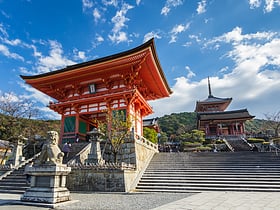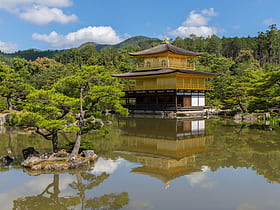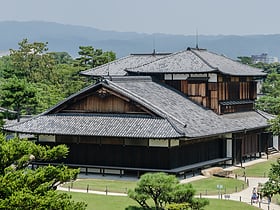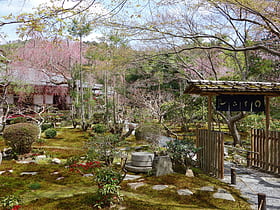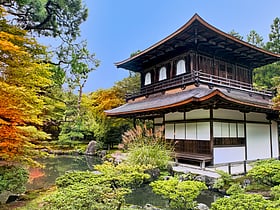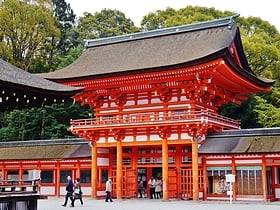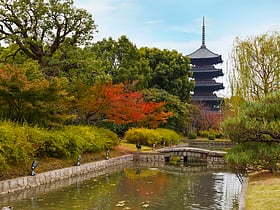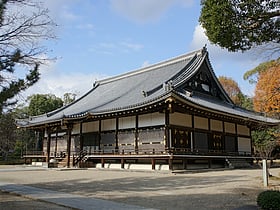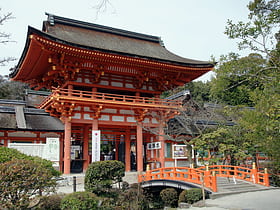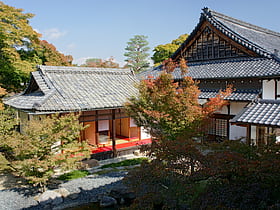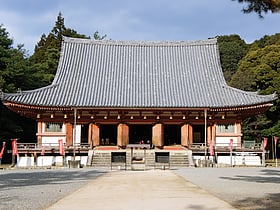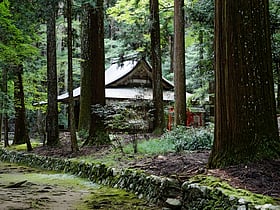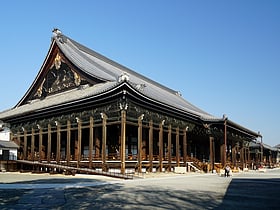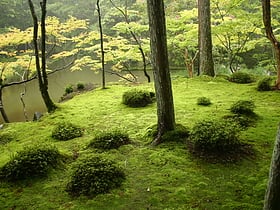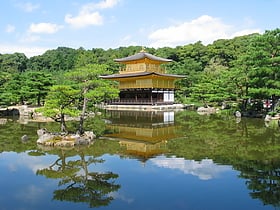Kyoto: Unesco
Places and attractions in the Unesco category
Categories
- Temple
- Sacred and religious sites
- Buddhist architecture
- Buddhist temple
- Museum
- Historical place
- Park
- Unesco
- Garden
- Art museum
- Specialty museum
- Street
- Universities and schools
- History museum
- Palace
- Area
- Theater
- Concerts and shows
- Shopping
- Bridge
- Neighbourhood
- Sport venue
- Sport
Kiyomizu-dera
Historic temple with picturesque views Kiyomizu-dera, nestled amidst the verdant hills of Eastern Kyoto, is a historic temple that has become an emblem of Japan's cultural heritage. Founded in the late Nara period in 778, the temple is renowned for its wooden stage that juts out from its Main Hall, 13...
Kinkaku-ji
Kinkaku-ji, also known as the Golden Pavilion, is a historic temple that has become an emblem of Kyoto, Japan. This Zen Buddhist temple is renowned for its top two floors completely covered in gold leaf, reflecting an image of opulence and serenity on the pond it...
Nijō Castle
Historic wooden castle with lush gardens Nijō Castle, a historic fortress nestled in the heart of Kyoto, Japan, stands as a testament to the country's feudal era and the power of the Tokugawa shoguns. Constructed in 1603, the castle was the official Kyoto residence of the Tokugawa Shogunate and was built...
Ryōan-ji
Long-standing temple with a Zen rock garden Ryōan-ji, located in the historic city of Kyoto, Japan, is an iconic Zen Buddhist temple known for its enigmatic rock garden, which attracts visitors from around the world. Established in 1450 during the Muromachi period, the temple belongs to the Myoshinji school of...
Ginkaku-ji
Enduring Zen temple with scenic gardens Ginkaku-ji, also known as the Silver Pavilion, is a historic temple that graces the cultural tapestry of Kyoto, Japan. This Zen temple, formally named Jishō-ji, was constructed in 1482 as a retirement villa for the shogun Ashikaga Yoshimasa, who intended to cover the...
Shimogamo Shrine
Nestled in the verdant embrace of Kyoto's Tadasu no Mori forest, Shimogamo Shrine stands as a serene testament to Japan's ancient Shinto traditions. This revered shrine, also known as Kamomioya Shrine, is one of the oldest and most significant Shinto sites in Kyoto...
Tō-ji
Famed Buddhist temple with a tall pagoda Tō-ji Temple, a beacon of spiritual serenity, stands proudly in the southern part of Kyoto, Japan. This historic temple, also known as Kyō-ō-gokoku-ji, meaning "The Temple for the Defense of the Nation by Means of the King of Doctrines," is a testament to the city's...
Ninna-ji
Buddhist temple with scenic grounds Ninna-ji is a historic temple that stands as a beacon of cultural heritage in the ancient city of Kyoto, Japan. This revered site, founded in the year 888, is a quintessential representation of Japanese religious architecture and traditional aesthetics.
Kamigamo Shrine
Long-standing Shinto shrine by a river Nestled in the verdant landscape of Kyoto, Kamigamo Shrine stands as a serene testament to Japan's ancient Shinto traditions. This historic shrine, one of the oldest in Japan, has been a spiritual sanctuary since its establishment in 678 AD.
Tenryū-ji
Zen temple in a scenic, tranquil setting Tenryū-ji is a serene oasis nestled in the heart of Arashiyama, a scenic district on the western outskirts of Kyoto, Japan. Founded in 1339 by the shogun Ashikaga Takauji, this historic temple serves as the head temple of the Tenryū branch of Rinzai Zen Buddhism.
Daigo-ji
Buddhist temple with gardens and a museum Daigo-ji, an ancient temple of profound historical significance, stands as a testament to the rich cultural heritage of Kyoto, Japan. Founded in the early Heian period, in 874, Daigo-ji is not merely a temple but an extensive complex that includes a pagoda, several...
Kōzan-ji
Buddhist temple with a trove of art Kōzan-ji, officially Toganōsan Kōsan-ji, is a Buddhist temple of the Omuro sect of Shingon Buddhism in Umegahata Toganōchō, Ukyō Ward, Kyoto, Japan. Kōzan-ji is also known as Kōsan-ji and Toganō-dera.
Nishi Hongan-ji
Nishi Hongan-ji is a Jōdo Shinshū Buddhist temple in the Shimogyō ward of Kyoto, Japan. It serves as the head temple of the sub-sect Honganji-ha.
Saihō-ji
Buddhist temple with famed moss garden Saihō-ji is a Rinzai Zen Buddhist temple in Matsuo, Nishikyō Ward, Kyoto, Japan. The temple, which is famed for its moss garden, is commonly referred to as "Koke-dera", meaning "moss temple", while the formal name is "Kōinzan Saihō-ji".
Historic Monuments of Ancient Kyoto
The UNESCO World Heritage Site Historic Monuments of Ancient Kyoto encompasses 17 locations in Japan within the city of Kyoto and its immediate vicinity. In 794, the Japanese imperial family moved the capital to Heian-kyō.
Map

